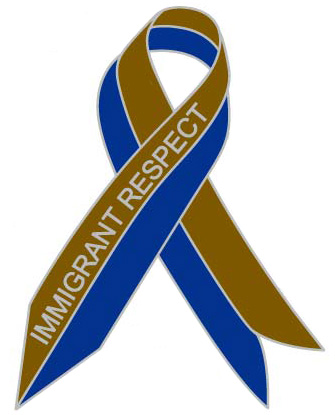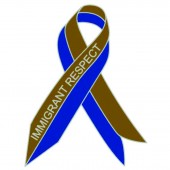The Occupy Movement gave me back the possibility of believing in democracy and in the power of the people. This is beautiful. I love you.
The first “free” elections I witnessed in my life were in the United States in the year 2000. I was extremely excited. After so many years hearing about democracy, I was here in the United States – the place FOR and ABOUT democracy. Now I would learn what that was all about.
The night of the election, I remember listening to my American friend’s explanation of the electoral college. My friend, a citizen who voted, was not as excited about the process and went to the other room to keep working. I wondered why she would not want to be with me, looking towards next 4 years of her country, when she was always in front of the TV to see every detail of a football game. I did not understand this seemingly misplaced enthusiasm. Did she not care or was it that working and earning money was more important than who governs? I was truly disturbed, alone in the living room locked into the TV reports, pen-in-hand, tracking the election on a color map of the country I’d taken from the newspaper, with of course a glass of Coca Cola. I was so excited, I was extremely attentive, I didn’t want to miss any detail, I was learning. I felt this knowledge could benefit my country – Cuba – at another moment. I could spread the word of what democracy was and how it functions. I felt I was being given a very special gift.
Then the Florida vote was announced. Gore wins! I run to inform my friend, who is surprised and kind of glad, but keeps typing, seeming amused by my enthusiasm. In a little bit I come back to inform my friend that the Florida vote has gone to Bush. My friend was enraged – because I was interfering in her work. She explained to me again with frustration how I did not understand democracy and how my lack of English didn’t help. She said an immigrant could not understand democracy, of course. But I had understood. In the next days, the controversy unfolded, and my fears were justified. As an immigrant, my first encounter with democracy was witnessing a broken system. I was devastated. Where would I look to now?
In the following days of deception, I kept telling my friends to go to the streets, to go and protest. I wanted to see here what I could not see in my country – free expression, direct democracy, the power of the people. My friend told me that Americans believed in the system and they had to go with the law. I was paralyzed, I was not given “permission” to participate, I was told that it was not “my” problem. I was wandering around like a political zombie, confused while I was witnessing the birth of a capitalist dictatorship, something I could identify because I had seen it in the country I came from.
I’m always surprised when people dismiss the knowledge an immigrant brings with them.
Immigrant is a word that I struggle to understand. I don’t understand the need to separate people because of the place they were physically born. One can be born more than once, one can decide to start over, and that is what happens when people leave their countries of origin, when they come to the United States. They are re-born.
But to have a second chance in the United States comes with a handicap. As an immigrant you are considered a second class citizen, you have to see your daughter go to work as an eternal waitress even when she has the best grades in her high school and wants to go to college and become a great biologist. That dream is not going to happen because of laws made to separate people, and to perpetuate modern slavery. The fact that you came here with a dream will not give you access to that dream.
We speak mostly of the immigrants who “made it” – the ones that have millions and are celebrities – but what of those many amazing people who are immigrants and have not been allowed to make it? Why do they have to be criminalized for the sole reason that they are not part of the 1%? The immigrants that I know are the bravest people I have ever met. They are the ones believing, they are they ones keeping the American Dream alive, even when it is evident that they hardly have access to it, when the American Dream has become a mirage.
Nobody has the right to kill someone’s dream. Nobody has the right to make the American Dream illegal.
Yesterday we were at ROCA in Chelsea, talking with a wonderful group of people, mostly immigrants. We ended the conversation by talking about what each of us want for the children of our communities – immigrant children. Everyone said to be treated as an equal. I have heard that before, when people talk about the years of the civil rights battles. Immigration is today’s civil rights battle. Immigration is a war, created by the 1%.
Immigrant is a word that does not represent us, we are not defined by being a person that comes from another place, we are not cheap labor for wealthy companies, we are a new global class. We are the engine of change – and the Occupy Movement is proof of that.
The call for this movement came from Adbusters, a Canadian magazine. A few weeks before we started to occupy Wall Street, the first planning meetings included people, living in the United States, who came here from Greece, Spain, Tunisia and Egypt, people who were transmitting their knowledge, their experience with earlier movements. It was from them that we learned the ways in which the General Assemblies were conducted, the contradictions and challenges we were going to go through with our movement. They were here and they were part of our movement. Some of them where undocumented immigrants and their status was not important to any of us planning the occupation – nobody asked about their legal status. We were all living together. The movement grew, more people joined, many immigrants blending with the rest as equals, dedicating their knowledge and sleepless hours, so that we could together build this amazing movement – a global movement redefining the very idea of democracy.
In this movement – a movement that speaks beyond borders – it makes no sense to cling to an old definition of national identities that restrict who people can be, what they can contribute and whether they can participate. This is a time of responsibility – a responsibility first to make this space safe for all, including immigrants, and then a responsibility to take this new democracy beyond this square.
Tania Bruguera, October 23, 2011







